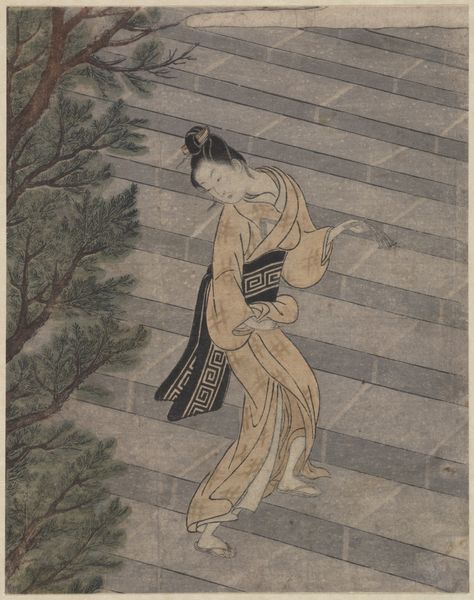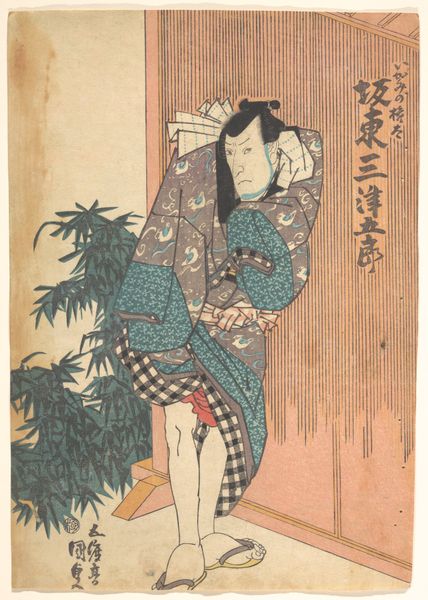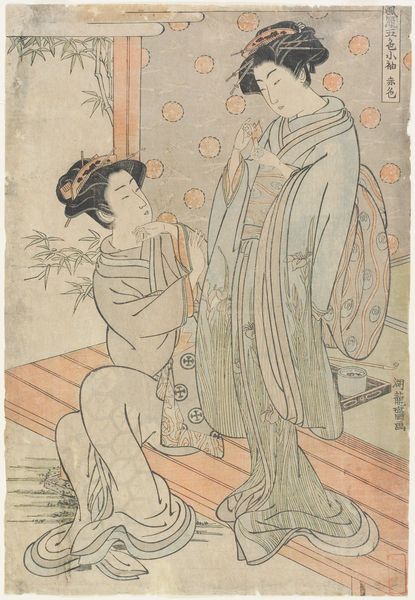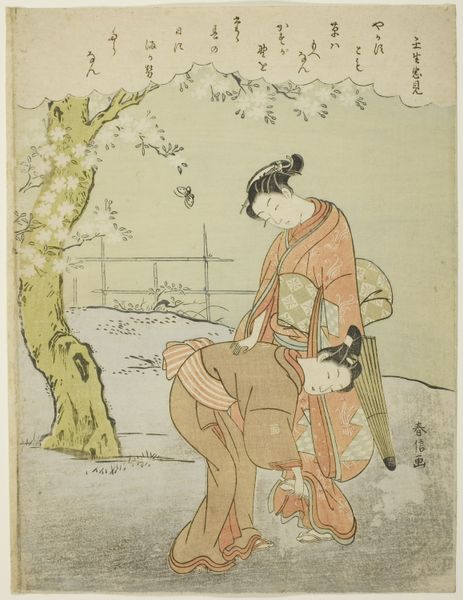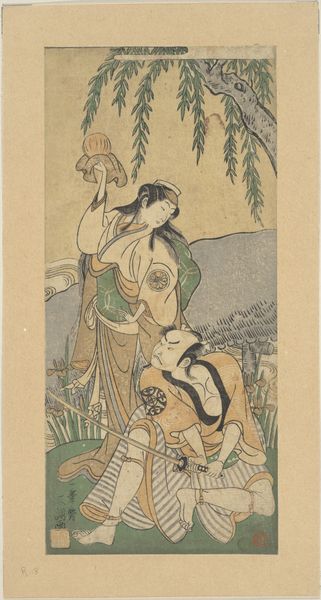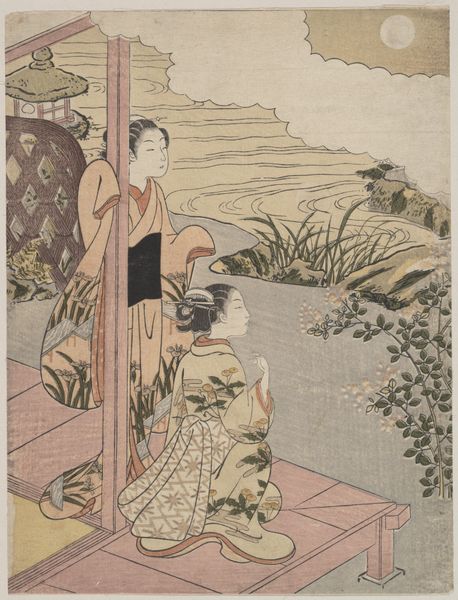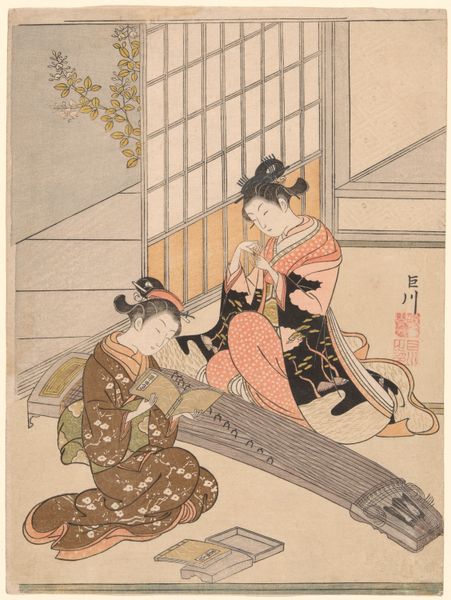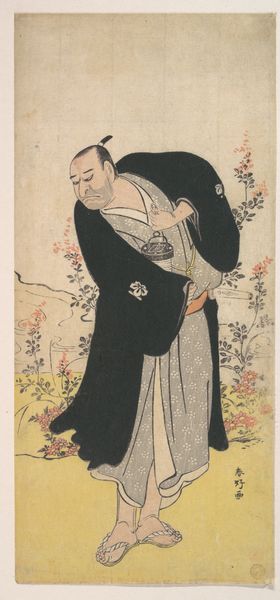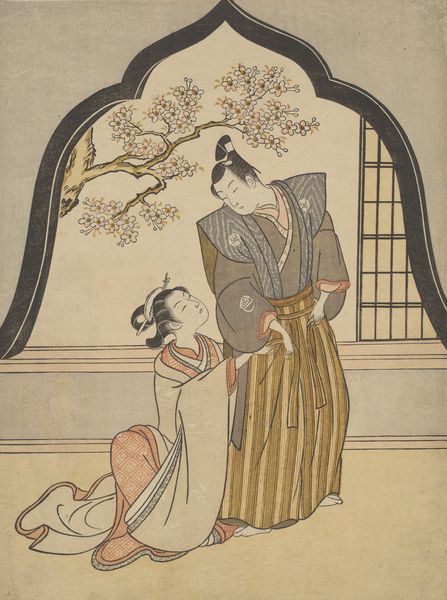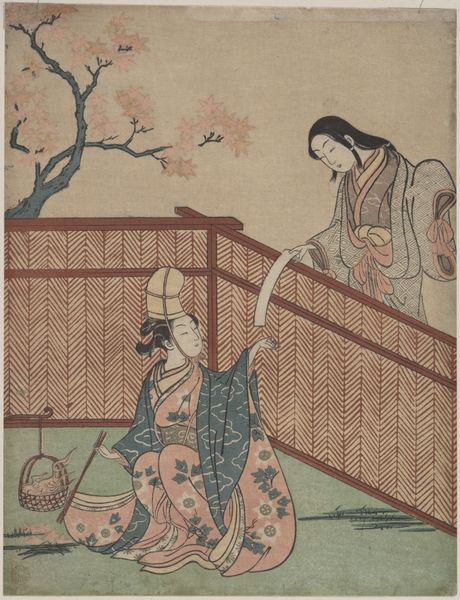
Climbing the steps one hundred times c. 1765
0:00
0:00
print, woodblock-print
# print
#
asian-art
#
landscape
#
caricature
#
ukiyo-e
#
figuration
#
woodblock-print
#
orientalism
#
genre-painting
Dimensions: 7.3 × 19.9 cm (10 3/4 × 7 7/8 in.)
Copyright: Public Domain
Curator: The woodblock print you are now viewing, titled "Climbing the steps one hundred times," comes to us from Suzuki Harunobu around 1765. It is currently housed here at The Art Institute of Chicago. Editor: It’s interesting; my first impression is a kind of serene formality. The lines of the staircase and the figure's pose create a very structured, almost geometric composition. Curator: Ukiyo-e prints like this one gained popularity in the Edo period as representations of the floating world of courtesans and the theater district, and Harunobu innovated a full-color printing technique. Editor: Yes, that restrained color palette, those soft pinks and grays… It accentuates the quiet, melancholic mood, doesn't it? The slightly faded colors give it a dreamlike quality. It's also so flat and linear in its representation of the stairs—almost like an Escher rendering, but more subtle. Curator: Some view this image within a network of cultural meanings surrounding femininity and idealized beauty within social constraints during the Edo period. The image is interpreted not merely as a depiction of leisure but as subtly referencing the restrictions placed upon women and their movement through space. Editor: It does draw the eye towards that descending figure and the rhythm of those steps; I see the subtle shifts in color—those slightly varied blues creating shadow versus light. It's almost as if those repeated lines, mimicking the shape of her decent, invite the eye to climb along with the figure through a sequence. Curator: Indeed. But this is equally a representation of a woman negotiating space and place during a rigid hierarchical power system. Consider her dress and stance. Her identity as more than someone meant simply for pleasure complicates any read of formalism. Editor: Perhaps… Yet the success of the artist's print seems largely rooted in that quietness I recognized upon first glance—one born from composition and color. Curator: But remember the social setting in which an image like this was shared. We cannot disregard social considerations that frame art’s role during rigid power structures. Editor: Fair point. It’s amazing how formal choices and socio-political elements meet. It helps us view the work through different lenses.
Comments
No comments
Be the first to comment and join the conversation on the ultimate creative platform.
